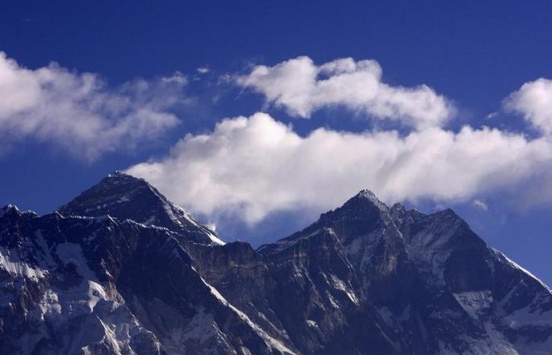Mt Everest’s Highest Glacier To Disappear By Middle Of This Century
Feb 10, 2022 | Pratirodh Bureau
FILE PHOTO: Clouds rise behind Mount Everest, the world's highest peak, as seen from Kongde near Namche Bazar, Nepal
Researchers in Nepal have warned that the highest glacier on top of Mount Everest could disappear by the middle of this century as the 2,000-year-old ice cap on the world’s tallest mountain is thinning at an alarming rate.
The International Centre for Integrated Mountain Development (ICIMOD) in Kathmandu said that Everest has been losing ice significantly since the late 1990s, citing the latest research report.
The Everest Expedition, the single most comprehensive Scientific Expedition to Everest, conducted trailblazing research on glaciers and the alpine environment, the ICIMOD said.
A recent article published in the Nature Portfolio journal reported that the ice on Everest has been thinning at an alarming rate.
The multidisciplinary team comprised scientists from eight countries, including 17 from Nepal. Three of the co-authors of the study were affiliated with the ICIMOD.
It has been estimated that the ice in the South Col glacier, located at an elevation of 8,020 metres, is thinning at a rate of nearly two metre per year, the report said.
The findings were based on data from a 10-metre-long ice core obtained from South Col Glacier (on the Nepalese side of Everest) at an elevation of 8,020 metres and meteorological observations from the two highest automatic weather stations in the world located on the southern slopes of Everest at 7,945 and 8,430 metres.
The researchers, on the basis of radiocarbon dating, estimated ice in the glacier to be 2,000-year-old.
They warned that the highest glacier could disappear by the middle of this century. The rate of ice loss measured is more than 80 times faster than the 2,000 years it took to form this thickness of the ice.
“The long-term effect on the availability and stability of these water towers which will impact downstream communities is of major concern,” the ICIMOD said in the statement.
Glaciers in the Himalayas make a significant contribution to water resources for millions of people.
The research finding states that the change in ice cover in Everest could have been triggered by climate change.
In December 2002, China and Nepal announced that the world’s highest peak is now taller by 86 centimetres after they remeasured Mt Everest at 8,848.86 metres, over six decades after India conducted the previous measurement in 1954.
The revised height of Mt Everest put an end to the decades-long dispute between the two neighbours on the height of the world’s tallest mountain that straddles their shared border.
The exact height of Mt Everest had been contested ever since a group of British surveyors in India declared the height of Peak XV, as it was initially called, to be 8,778 metres in 1847.
Mt Everest stands on the border between China and Nepal and mountaineers climb it from both sides.
Mt Everest is known as Sagarmatha in Nepal while in China it is called Mt Qomolangma, the Tibetan name for the world’s highest peak.
